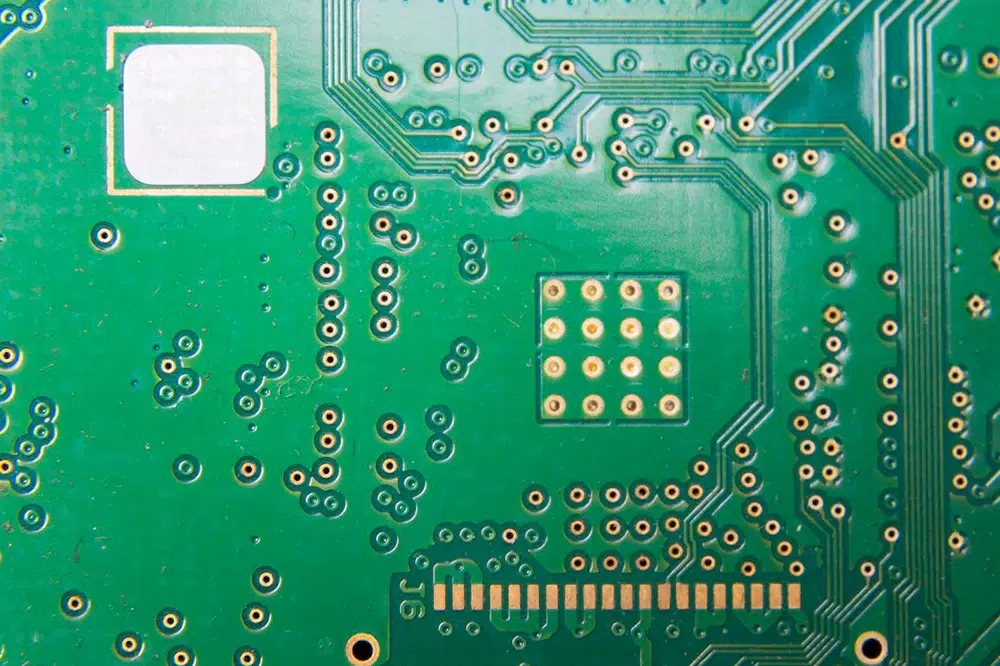Choosing the appropriate surface treatment for PCB (Printed Circuit Board) boards is essential for ensuring the performance, reliability, and longevity of the final product. The surface treatment protects the copper traces and pads from oxidation and contamination, facilitates soldering, and can influence the overall assembly process. Here’s a detailed guide on how to choose the right surface treatment for PCB boards:
Understand the Requirements
– Environmental Conditions: Consider the operating environment of the PCB. For harsh environments (e.g., high humidity, corrosive atmospheres), more robust surface treatments are needed.
– Assembly Process: Think about the type of soldering process used (e.g., wave soldering, reflow soldering) as some treatments are better suited for specific methods.
– Longevity and Reliability: Determine the expected lifespan and reliability requirements of the PCB.
Important of surface treatment for PCB
Surface treatment is a critical process in PCB manufacturing that plays a fundamental role in ensuring the performance, reliability, and longevity of electronic devices. This process involves applying a protective coating to the copper traces and pads on a PCB, which serves several essential functions.
1. Surface treatment safeguards the PCB from oxidation and corrosion. Copper, a primary material used in PCBs, is highly susceptible to oxidation when exposed to air and moisture. This oxidation can impair the electrical conductivity and overall performance of the board. Surface treatments provide a barrier that prevents oxidation and corrosion, thereby preserving the integrity of the copper and ensuring reliable electrical connections.
2. Surface treatments enhance the solderability of the PCB. A well-treated surface facilitates better solder adhesion, which is crucial for forming strong and reliable solder joints during the assembly process. This improves the quality of the PCB assembly and reduces the risk of defects such as solder bridges or cold solder joints, which can lead to circuit failures.
3. Surface treatments also play a key role in the automated assembly process. By providing a consistent and reliable surface, these treatments ensure that automated equipment can accurately place and solder components, which is vital for high-volume production. This uniformity helps minimize handling and storage issues that could otherwise affect the PCB’s performance.
4. Surface treatments help meet industry standards and regulatory requirements, such as RoHS (Restriction of Hazardous Substances). They also contribute to the aesthetic quality of the PCB, offering a clean and professional finish that can be important for consumer-facing products.
In summary, surface treatment is indispensable for PCBs, providing protection, enhancing solderability, supporting automated assembly, and ensuring compliance with industry standards. Its importance cannot be overstated in the realm of electronics manufacturing.
Common Surface Treatments

1. Hot Air Solder Leveling (HASL)
– Description: A process where the PCB is coated with a layer of solder and then leveled with hot air.
– Advantages:
– Provides good solderability and protection against oxidation.
– Disadvantages:
– May not be ideal for lead-free soldering without modifications.
2. Lead-Free Hot Air Solder Leveling (LF-HASL)
– Description: Similar to HASL but uses lead-free solder.
– Advantages:
– Disadvantages:
3. Electroless Nickel Immersion Gold (ENIG)
– Description: A chemical process that deposits a layer of nickel followed by a thin layer of gold.
– Advantages:
– Provides a flat surface ideal for soldering and good oxidation resistance.
– Disadvantages:
– Can be prone to some issues like black pad syndrome if not properly managed.
4. Immersion Silver (IS)
– Description: A process where a thin layer of silver is deposited onto the PCB surface.
– Advantages:
– More cost-effective than ENIG.
– Disadvantages:
– Less robust in harsh environments compared to ENIG.
5. Immersion Tin (IT)
– Description: A process where a thin layer of tin is deposited onto the PCB.
– Advantages:
– Disadvantages:
– Less durable in high-temperature or high-humidity environments.
6. Organic Solderability Preservative (OSP)
– Description: A thin organic coating applied to protect copper pads until soldering.
– Advantages:
– Provides a clean, flat surface for soldering.
– Disadvantages:
– Less robust compared to metallic coatings for long-term reliability.
Considerations for Choosing the Surface Treatment
– Cost: Evaluate the cost implications of each treatment in relation to your budget.
– Assembly Process Compatibility: Ensure that the treatment is compatible with your soldering process and components.
– Environmental Compliance: Choose treatments that meet environmental regulations such as RoHS.
– Performance and Reliability: Consider the impact of the treatment on the performance and longevity of the PCB.
– Manufacturer’s Capabilities: Verify that your PCB manufacturer can provide the chosen treatment and that it meets their quality standards.
Conclusion
Selecting the right surface treatment involves balancing factors such as cost, performance, reliability, and environmental conditions. Each treatment has its own set of advantages and trade-offs, so understanding your PCB’s requirements and constraints is crucial in making an informed decision.
PCB surface treatment refers to the process of applying a protective coating to the copper pads and traces on a PCB. This coating prevents oxidation, enhances solderability, and improves the overall reliability of the PCB.
Surface treatment is crucial because it protects the PCB from oxidation and corrosion, ensures reliable soldering of components, and helps maintain the board’s electrical performance and longevity.
The most common types include Hot Air Solder Leveling (HASL), Lead-Free Hot Air Solder Leveling (LF-HASL), Electroless Nickel Immersion Gold (ENIG), Immersion Silver (IS), Immersion Tin (IT), and Organic Solderability Preservative (OSP).











